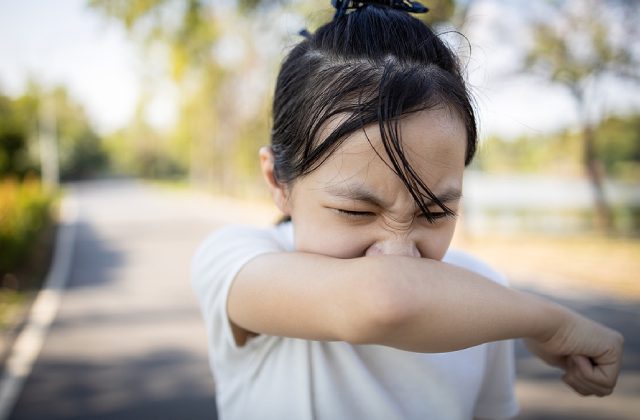
A home is supposed to be a safe haven—but with indoor allergens like dust mites, your child might have an unpleasant time even in the comfort of their own living space.
Dust mite allergies are common in Singapore and may cause respiratory issues, which can be distressing for both the parent and child. As such, it is critical to understand what dust mite allergies are and what you can do to alleviate symptoms.
What Is a Dust Mite Allergy?
Dust mites are tiny insects that feed on organic matter like skin flakes. They thrive in soft furnishings that accumulate human skin flakes, such as pillows, stuffed animals, rugs and carpets, and mattresses. They are typically invisible to the naked eye and can only be seen with the help of a microscope.
When your immune system mistakes a foreign substance as harmful, it produces antibodies, which release substances like histamines. In dust mite allergy, the radverse eaction to dust mites cause an inflammatory response in your nasal passages or lungs.
Notably, it is not the dust mites themselves but their faecal particles that trigger an allergic reaction. Dust mite faeces contain proteins that attach themselves to dust and spread around the space. When breathed in, they cause respiratory problems.
Signs Your Child Has a Dust Mite Allergy
Signs of a dust mite allergy include symptoms common to colds and hay fever. Some symptoms to watch out for are:
- Sneezing.
- Runny nose.
- Nasal congestion.
- Itchy skin.
- Itchy, watery, or red eyes.
- Dark circles under the eyes.
- Wheezing and difficulty breathing.
How to Differentiate Between a Cold and a Dust Mite Allergy?
If your child has been experiencing the abovementioned symptoms consistently for 4 weeks or more, they may be experiencing a dust mite allergy
It would also help to watch out for their sleep patterns. Most exposure happens at night as dust mites hide away in warm, moist environments such as beds. Therefore, children with a house dust mite allergy might have poor-quality sleep, causing them to be tired and irritable when they wake up. They may also exhibit more symptoms, such as having a sneezing fit, in the morning.
What Can You Do?
If left untreated, your child’s symptoms may worsen, leading to significant disturbance in sleep, breathing or even cause respiratory issues such as wheezing. Hence, it is best to consult a paediatrician who conducts allergy testing for children. You may refer to our guide on ways to prepare for an allergy test for more information.
After diagnosis, your paediatrician may suggest medication such as saline nasal sprays, medicated nasal steroid sprays or over-the-counter antihistamines.
It is also best to minimise exposure by:
- Vacuuming your home regularly.
- Avoiding feather or down cushions, pillows, and duvets.
- Avoiding stuffed toys.
- Hot water washing bedsheets.
- Swapping out carpeting for hard flooring.
- Avoiding humidifiers, which help create an environment where dust mites thrive.
Conclusion
House dust mite allergies can significantly impact your child’s well-being and quality of life. Hence, it is critical to watch out for possible signs of an allergy in your child and consult an allergy paediatrician when needed. If your family lives in the East of Singapore, consider consulting Petite Practice, a paediatric allergy clinic in Katong, for comprehensive paediatric care and allergy identification services.



